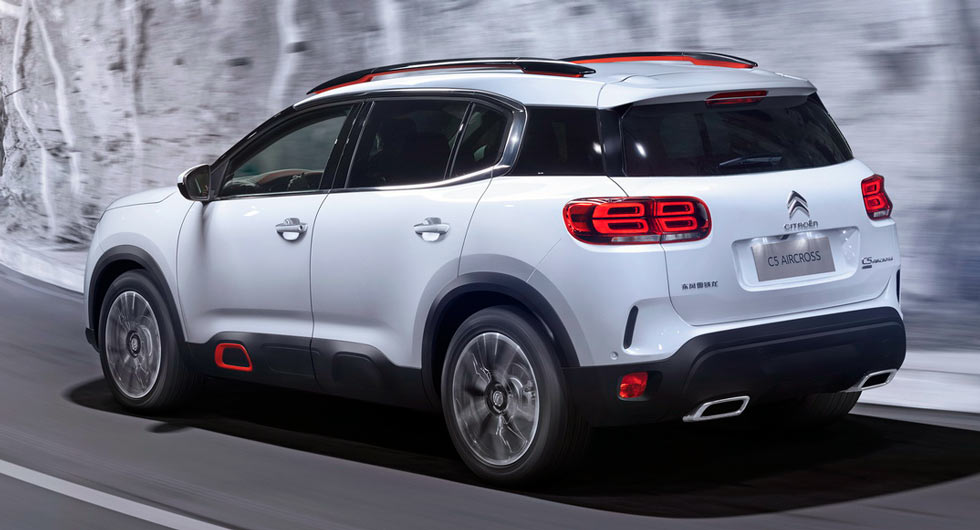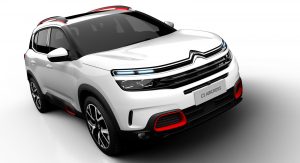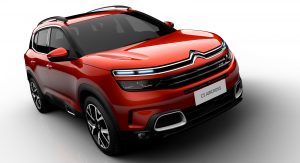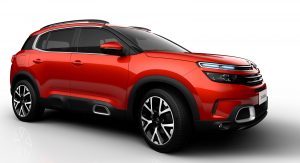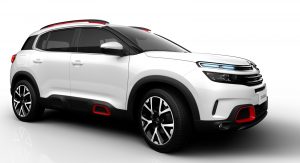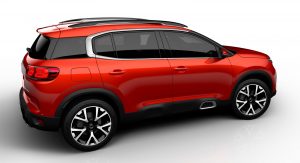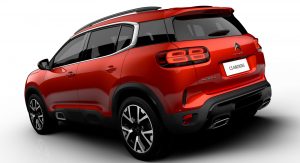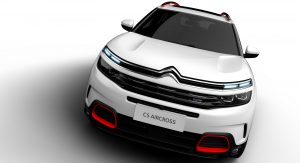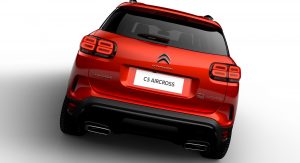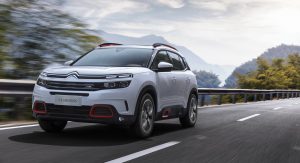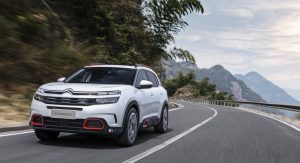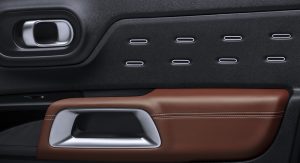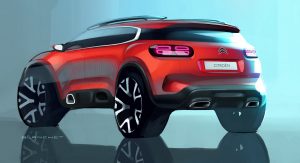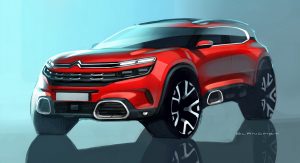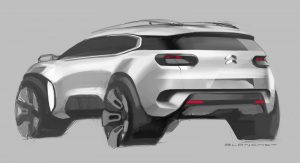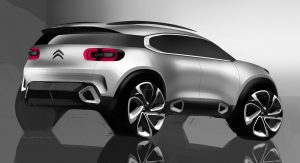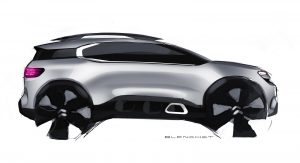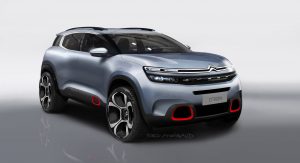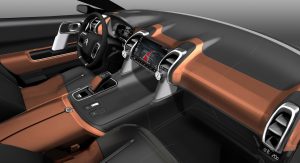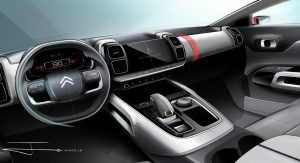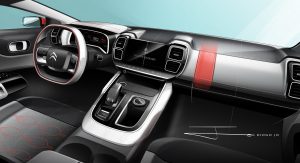Following last week’s major leak, Citroen has officially released the first batch of photos and information around its new C5 Aircross, set to debut at the Shanghai Auto Show.
Inspired by the 2015 Aircross concept, the new C5 Aircross represents an important milestone in Citroen’s market strategy, being the first model to come with the company’s new innovative suspension that features “Progressive Hydraulic Cushions”.
According to Citroen, the new suspension ensures a “uniquely smooth and comfortable ride that is typically Citroën” as it replaces the conventional dampers, springs and mechanical bump-stops with two hydraulic stops to each suspension unit – one for rebound and one for compression.
The French company also claims that the new C5 Aircross offers class-leading space for all occupants, thanks to one of the longest wheelbases (2,730mm) in the segment and the non-intrusive dashboard. The cabin also features a 12.3-inch digital instrument cluster, an eight-inch high-def infotainment system and a wireless charging function for smartphones among others.
The engine range will be initially comprised by two petrol engines with 165hp and 200hp for the Chinese market, both mated to a six-speed automatic gearbox. Citroen says that a plug-in hybrid version with e-AWD will also follow, powered by a combination of the 200hp engine and two electric motors for a total output of 300hp, making it the most powerful production Citroen ever made. The C5 Aircross PHEV will offer 60km (37 miles) of all-electric range as well.
Front-driven models will feature the company’s Grip Control which is Citroen’s way of improving the traction through the ESP module, offering five modes: ‘Standard’, ‘Sand’, ‘Off-road’, ‘Snow’ and ‘ESP OFF’.
A wide range of driver assistance systems is also present and includes features like Hill Descent Control, Active Safety Brake, Active Lane Departure Warning and Adaptive Cruise Control with Stop Function.
The new Citroen C5 Aircross will hit the Chinese market this October, with the French company saying that Europe must wait until the second half of 2018.




